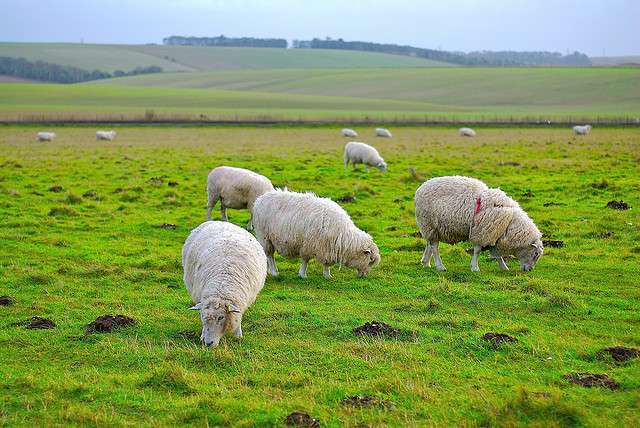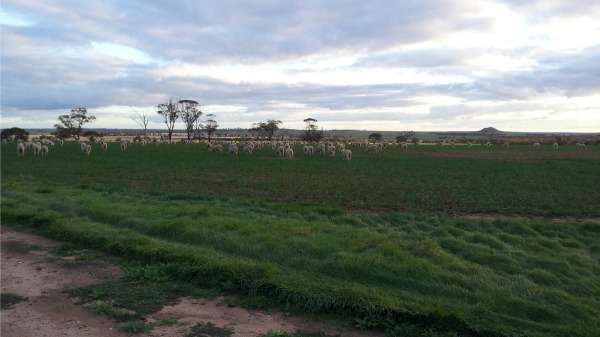Sheep benefit from grazing spring crops

Scientists have used a computer modelling program to determine the benefits of grazing sheep on spring wheat crops instead of pasture.
The practice is becoming an increasingly popular way to provide easy access to high-quality feed earlier in the season, with the assumed advantage of sparing pasture paddocks during establishment.
However, the modelling reveals that such a measure provides little overall benefit to pasture growth.
It does, however, show sheep benefit from the additional pasture that accumulates while pasture paddocks are rested, with an increase in the weight of lambs at weaning associated with the extra pasture.
The modelling was based on a typical wheat and sheep farm in the Wheatbelt using climate data from 1962 to 2011 for three locations representing low, medium and high-rainfall cropping areas—Merredin, Wickepin and Kojonup.
It investigated two different grazing scenarios—one in which livestock grazed crops only until the stems of the newly sown crop started to elongate (if left after this point the grazing is more likely to damage the wheat crop).
The second scenario involved 'shadow-grazing' in which a group of ewes identical to the first flock grazed annual pastures at the same time.
CSIRO researcher Dean Thomas says the difference between the two scenarios represented the value in delaying grazing on pasture by using wheat crops.
"Pasture deferment had little effect on total pasture production during the period when crops were grazed," Dr Thomas says.

"However, there was a small benefit to feed supply through the accumulation of pasture during the period of crop grazing.
"This feed was available at a time of year when feed is scarce. This was reflected in improved animal production, with the weight of lambs at weaning being higher in the crop-grazing scenario than the shadow-grazing scenario."
The modelling predicted grazing the wheat crops would reduce wheat yield by about five per cent, where grazing was restricted to the period before the 'stem elongation' stage.
This result was consistent with what has been found, on average, in many field studies.
The computer modelling work is part of a national Grains Research and Development Corporation-funded project called Grain and Graze, which incorporates a range of research activities looking at boosting the benefits of integrating cropping and livestock enterprises.
Provided by Science Network WA

















